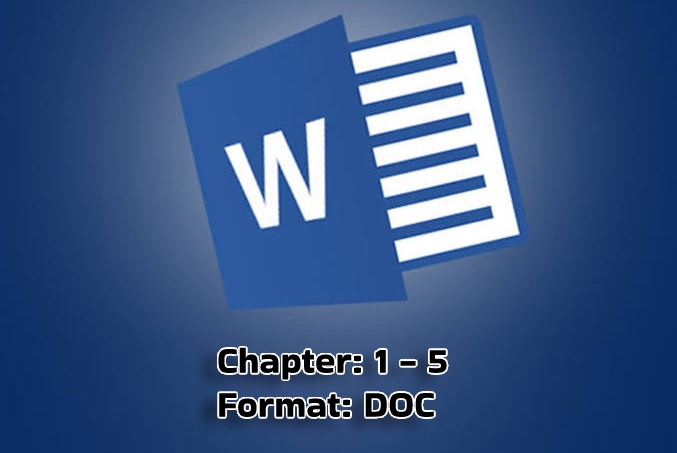Description
CHAPTER ONE
1.0 INTRODUCTION
The Environmental Impact Assessment (EIA) procedure ensures that the potential
environmental impacts of project are identified, assessed, managed and reduced
to acceptable levels before consent is given by the regulatory authority. We firmly
believe that this is a process which, when integrated into our business, should
identify and minimize the potential environmental impact of the proposed
development. The Environmental Statement (ES) used to support the consent
application records the EIA process that Mainstream has undertaken.
The EU EIA Directive requires that the direct and indirect effects of the project on
the following factors are assessed:
human beings, fauna and flora;
soil, water, air, climate and the landscape;
material assets and the cultural heritage;
Consultation is a crucial and ongoing element of the EIA process. The public can
give its opinion and all results are taken into account in the authorization
procedure of the project.
1.2 BACKGROUND OF THE STUDY
Environmental Assessment is covered by European Council Directive 85/337/EEC
as amended by Council Directive 97/11/EC on the assessment of the effects of
certain public and private projects on the environment.
This directive is implemented in Highways Agency Projects through Section 105A
of the Highways Act 1980 as amended by the The Highways (Assessment of
Environmental Effects) Regulations 1994 and by the Highways (Assessment of
Environmental Effects) Regulations 1999 as amended by the Highways
(Environmental Impact Assessment) Regulations 2007.
1.3 PURPOSE OF THE STUDY
This guidance note (GN) serves to provide general reference for practitioners to
prepare Road Traffic Noise Impact Assessment (RTNIA) for designated projects
(DPs) under the Environmental Impact Assessment Ordinance (EIAO).
This GN is advisory in nature and is designed to facilitate the practitioners to
prepare the RTNIA. It should not be construed in anyway as to supersede the
relevant requirements in the Technical Memorandum on Environmental Impact
Assessment Process (EIAO-TM). The principles set out in the EIAO-TM are to avoid
(which should be given the highest priority) and minimize the potential adverse
environmental impacts by alternative land use arrangements, alignments, siting
and other measures, and should be followed when preparing the RTNIA.
This GN may be updated and supplemented by other advice from the
Environmental Protection Department from time to time to take into account
changing circumstances.
1.3 OBJECTIVES OF THE STUDY
ensuring environmental factors are considered in the decision-making process
ensuring that possible adverse environmental impacts are identified and
avoided or minimized
informing the public about the proposal
1.4 ADVANTAGES OF THE STUDY
facilitates the design of a monitoring programme
allows people to examine the underlying need for a project
gives people the opportunity to identify problems
helps a developer to design a more publicly acceptable project
exploration of alternatives can help identify cost-saving and other beneficial
changes
According to a United Nations Environment Program Training Resource Manual
the main advantages and benefits of EIA are:
improved project design/siting;
more informed decision-making;
more environmentally sensitive decisions;
increased accountability and transparency during the development process;
improved integration of projects into their environmental and social setting;
reduced environmental damage;
more effective projects in terms of meeting their financial and/or socio-
economic objectives; and
a positive contribution toward achieving sustainability.
1.5 BENEFITS OF THE STUDY
The benefits of EIA can be direct, such as the improved design or location of a
project, or indirect, such as better quality EIA work or raised environmental
awareness of the personnel involved in the project. In these cases, there will be
with flow-on effects in their future work. As mentioned above, these potential
gains from EIA increase the earlier the process is applied in the design process.
In general the benefits of EIA include:
Better environmental planning and design of a proposal. Carrying out an EIA
entails an analysis of alternatives in the design and location of projects. This
can result in the selection of an improved technology, which lowers waste
outputs or an environmentally optimum location for a project. A well-designed
project can minimize risks and impacts on the environment and people, and
thereby avoid associated costs of remedial treatment or compensation for
damage.
Ensuring compliance with environmental standards. Compliance with
environmental standards reduces damage to the environment and disruption
to communities. It also avoids the likelihood of penalties, fines and loss of trust
and credibility.
Savings in capital and operating costs. EIA can avoid the undue costs of
unanticipated impacts. These can escalate if environmental problems have not
been considered from the start of proposal design and require rectification
later. An ‘anticipate and avoid’ approach is much cheaper than ‘react and
cure’. Generally, changes which must be made late in the project cycle are the
most expensive.
Reduced time and costs of approvals of development applications. If all
environmental concerns have been taken into account properly before
submission for project approval, then it is unlikely that delays will occur as a
result of decision-makers asking for additional information or alterations to
mitigation measures. Increased project acceptance by the public.
This is achieved by an open and transparent EIA process, with provision of
opportunities for public involvement of people who are most directly affected by
and interested in the proposal, in an appropriate way that suits their needs

